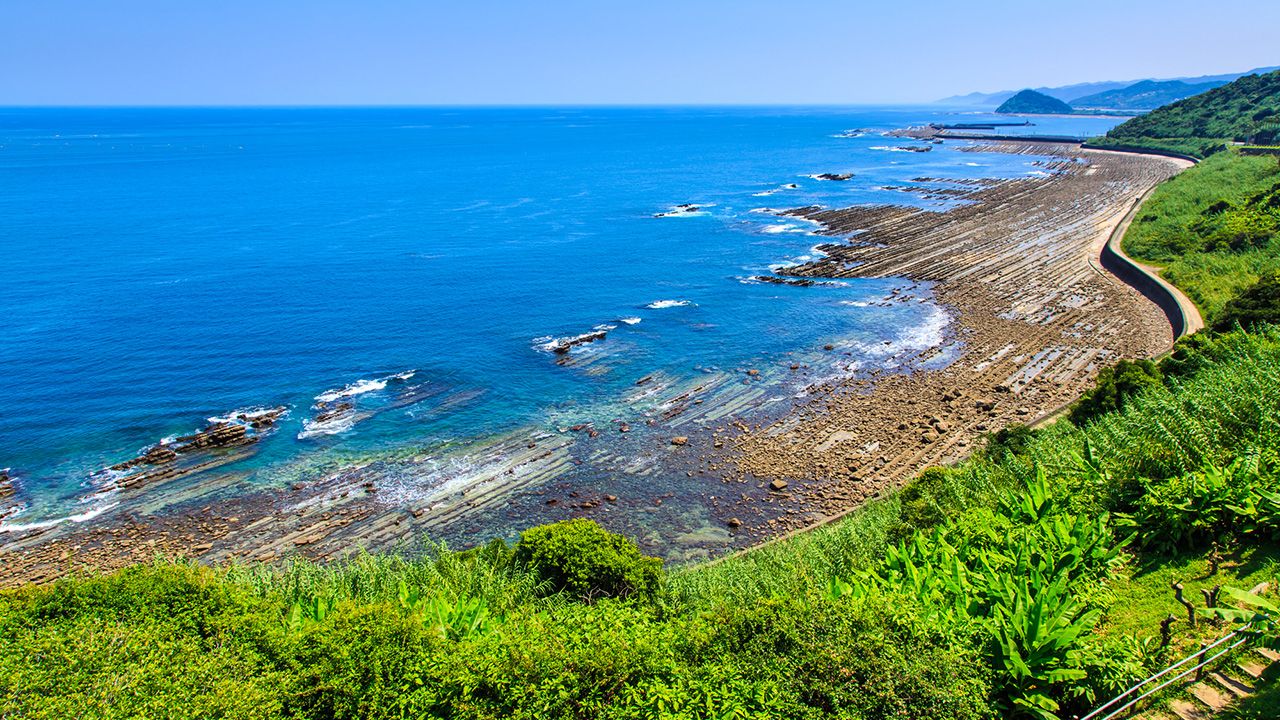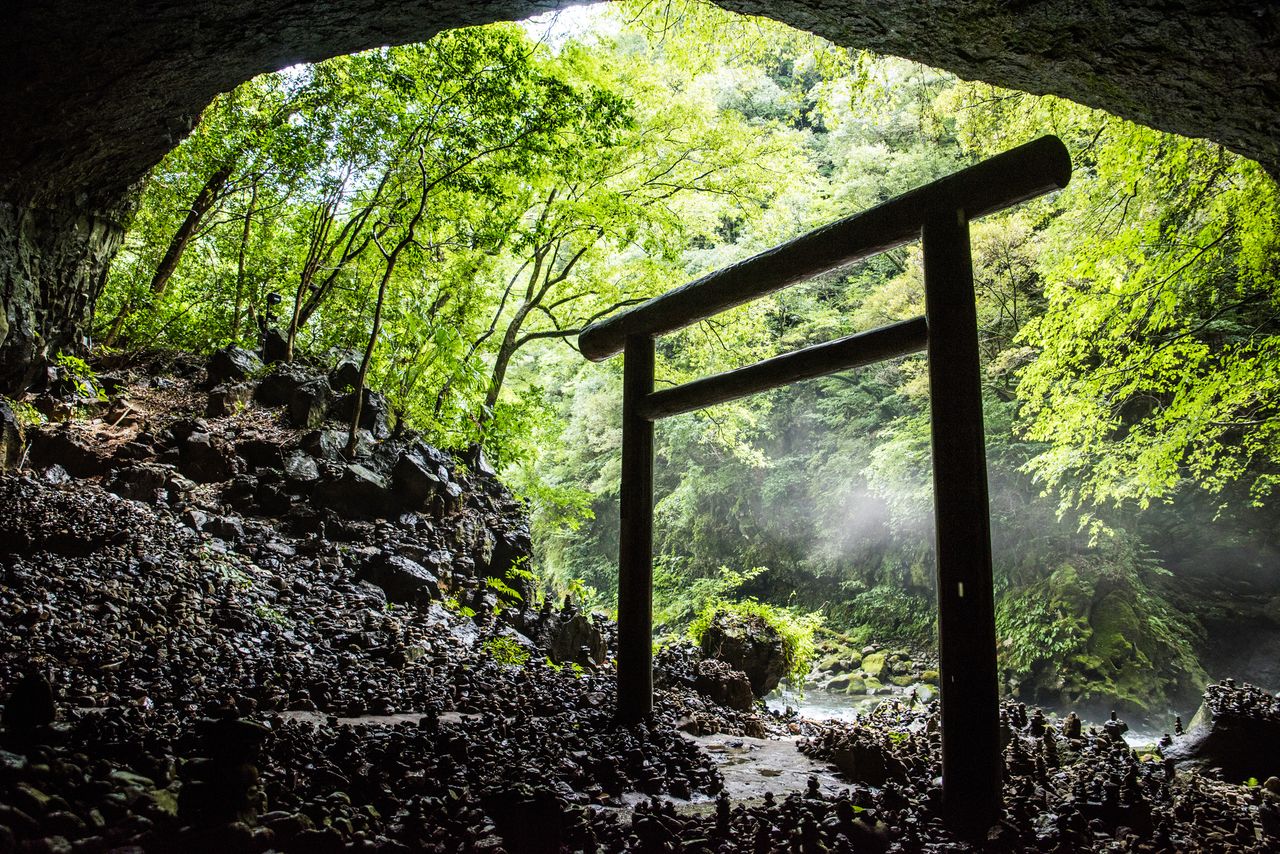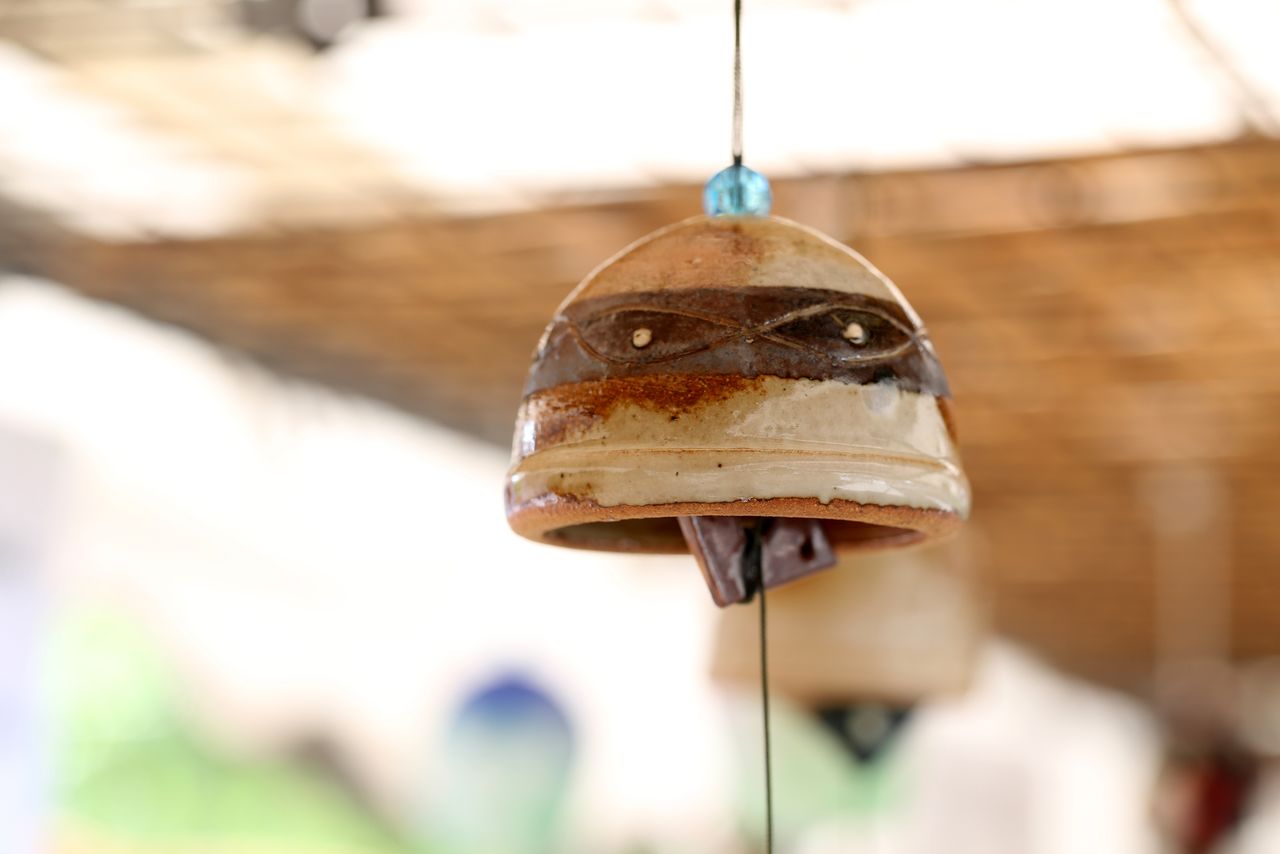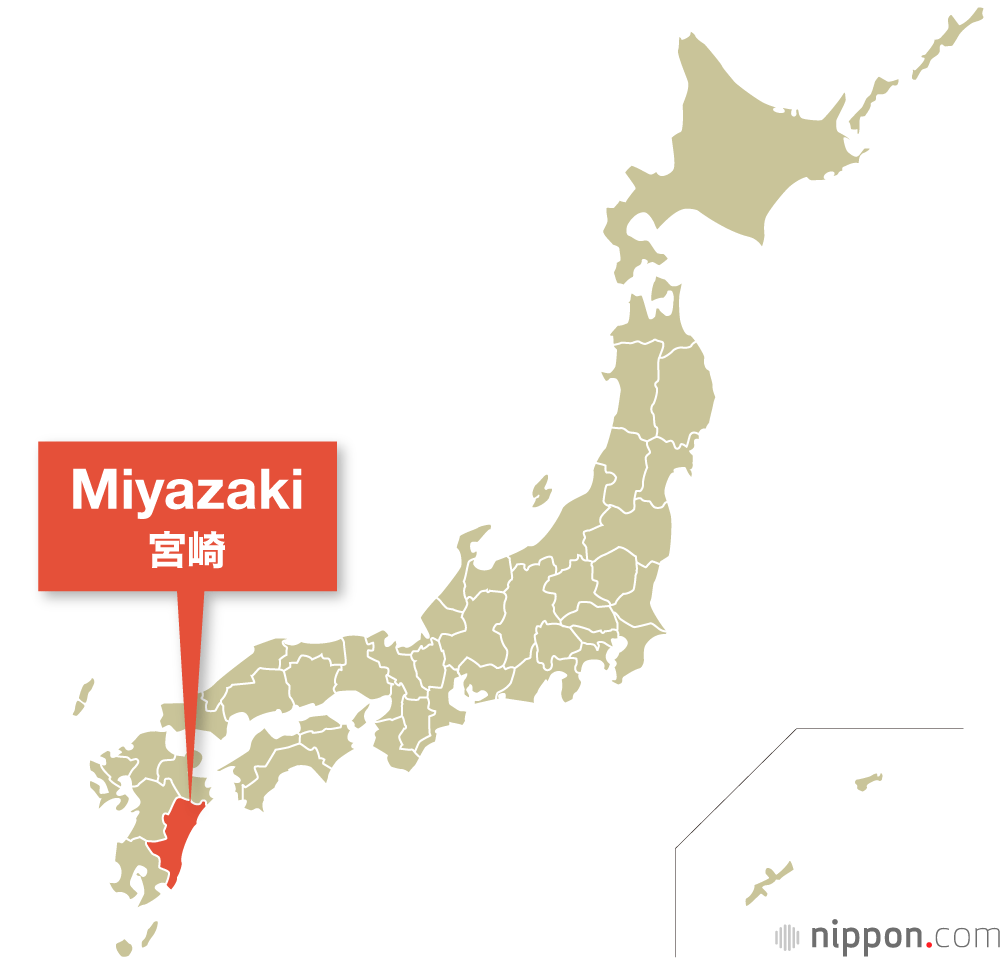
Miyazaki Prefecture
Guideto Japan
Culture History- English
- 日本語
- 简体字
- 繁體字
- Français
- Español
- العربية
- Русский
Miyazaki Prefecture sits along the Pacific coast of southeast Kyūshū. It is dominated by mountains, including the soaring volcanic peaks of the Kirishima range in Kirishima-Kinkōwan National Park. The capital of Miyazaki and second-largest city of Miyakonojō are situated on sizable plains in the central and southwestern part of the prefectures, respectively. The coastline stretches for over 400 kilometers, with its many beaches being an important habitat for green turtles.
Miyazaki Prefecture at a Glance
- Established in 1871 (formerly Hyūga province)
- Capital: Miyazaki
- Population: 1,070,000 (as of Oct. 2020)
- Area: 7,734 km2
The town of Takachiho in the north of the prefecture is where legend says the sun goddess Amaterasu hid from her mischievous brother Susanoo, marking a pivotal event in Japanese mythology. It is also the location of the picturesque Takachiho Gorge, with its sheer cliffs and cascading waterfalls, as well as the Takachiho Shrine, known for yokagura, evening performances of sacred Shintō music and dance. The Nichinan Coast in the south is a popular destination for beach goers and surfers. It also boasts a number of offshore islands that support lush stands of subtropical vegetation and troops of wild Japanese macaques. Many professional sports teams hold their preseason camps in the prefecture, drawing fans from around the country.

The Amano Yasukawara cave at Amano Iwato Shrine is said to be where the gods plotted to lure Amaterasu out of hiding and restore light to the world. (© Pixta)
Miyazaki’s rich soils and mild climate support a robust agricultural industry, including the production of staples like cucumbers and green peppers as well as mangoes and other fruit. Livestock is also an important sector, as are forestry and fishing. The prefecture is a leading manufacturer of chemical fertilizers, wood pulp, synthetic fibers, and electronic devices.

A windchime in the Hyūga Hokoshimayaki style of pottery. (© Pixta)

The Miyazaki-ken are doglike characters in three incarnations symbolizing well-known goods and other aspects of the prefecture. From left, they are Hī-kun, Mū-chan, and Kā-kun. (Miyazaki-ken © Miyazaki Prefecture)
Famous Figures
- Komura Jutarō (1855–1911): Diplomat who represented Japan at the Portsmouth Peace Conference following the 1904–5 Russo-Japanese War.
- Takaki Kanehiro (1849–1920): Medical doctor who founded Japan’s first school for nurses and Tokyo’s Jikei University School of Medicine. As a naval surgeon, he devised a cure for the disease beriberi.
(Originally published in English. Banner photo: The Oni no Sentakuita [ogre washboard] rock formations stretch along the Nichinan Coast. © Pixta.)
For the complete list of the country’s 47 prefectures, see “The Prefectures of Japan.”
